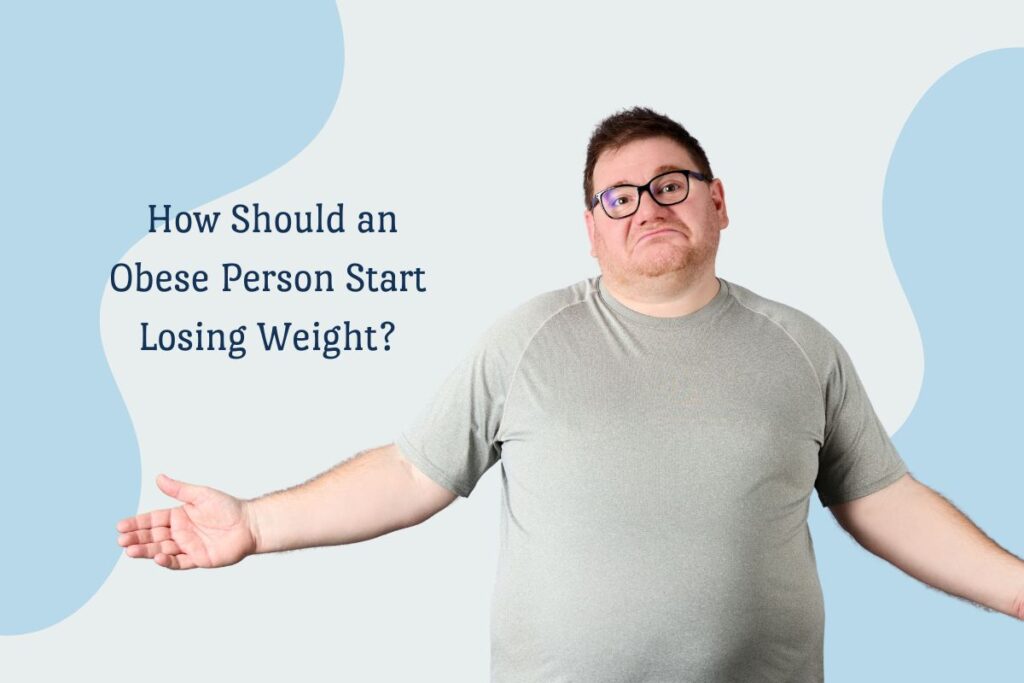Let’s talk turkey – or rather, about ditching the turkey (and maybe a few other things) to kickstart a healthier you. If you’re carrying a few extra pounds, or perhaps a whole lot, and are ready to make a change, you’re in the right place. Losing weight can feel like climbing Mount Everest in flip-flops, but trust me, it’s doable.
First things first, let’s ditch the “diet” mentality. Diets are like that trendy sweater you bought – exciting at first, but eventually, you shove it into the back of the closet. Instead, let’s focus on lifestyle changes. Think of it as a long-term relationship with your health, not a one-night stand with a fad.
Where Should an Obese Person Start Losing Weight?
An obese person should begin by consulting a healthcare professional for a personalized assessment and plan, as individual needs vary significantly. They should then focus on making small, sustainable lifestyle changes, prioritizing balanced nutrition, and gradually increasing physical activity. Starting with achievable goals, like incorporating more vegetables and short walks, builds momentum and sets the foundation for long-term success.
Step 1: Talk to a Pro
Before you dive headfirst into the world of kale smoothies and marathon training, chat with your doctor. They can give you a personalized plan, check for underlying health issues, and help you set realistic goals. Plus, they can be your cheerleader when you feel like throwing in the towel.
Step 2: Small Bites, Big Changes
Don’t try to overhaul your entire life overnight. Start with small, manageable changes. Maybe it’s swapping sugary sodas for water or adding a 30-minute walk to your daily routine. Small wins lead to big victories.
Step 3: Food: Friend, Not Foe
Let’s face it—food is delicious, but it’s also fuel. Focus on whole, unprocessed foods like fruits, veggies, lean proteins, and whole grains. Learn to read food labels and understand portion sizes. And remember, it’s okay to indulge occasionally—just don’t make it an everyday thing.
Step 4: Move It, Move It!
Exercise doesn’t have to be a dreaded chore. Find something you enjoy – dancing, swimming, hiking, even gardening! Aim for at least 150 minutes of moderate-intensity aerobic activity per week. And don’t forget strength training! Building muscle helps burn calories even when you’re resting.
Step 5: Sleep and Stress: The Dynamic Duo
Lack of sleep and chronic stress can sabotage your weight loss efforts. Aim for 7-9 hours of quality sleep each night. Find healthy ways to manage stress, such as meditation, yoga, or time in nature.
Step 6: Track Your Progress
Keep a food journal, use a fitness tracker, or take progress photos. Seeing your progress can be a huge motivator. And don’t just focus on the numbers on the scale. Celebrate non-scale victories, like fitting into your favorite jeans or having more energy.
Step 7: Find Your Tribe
Having a support system can make all the difference. Join a weight loss group, find a workout buddy, or share your journey with friends and family. They’ll be there to cheer you on and keep you accountable.
Step 8: Be Kind to Yourself
Weight loss is a journey, not a race. There will be ups and downs, setbacks and triumphs. Don’t beat yourself up if you slip up. Just dust yourself off and keep moving forward. Remember, you’re worth the effort.
Losing weight is about more than just looking good. It’s about feeling good, having more energy, and improving overall health. So, take that first step, and remember, you’ve got this!



